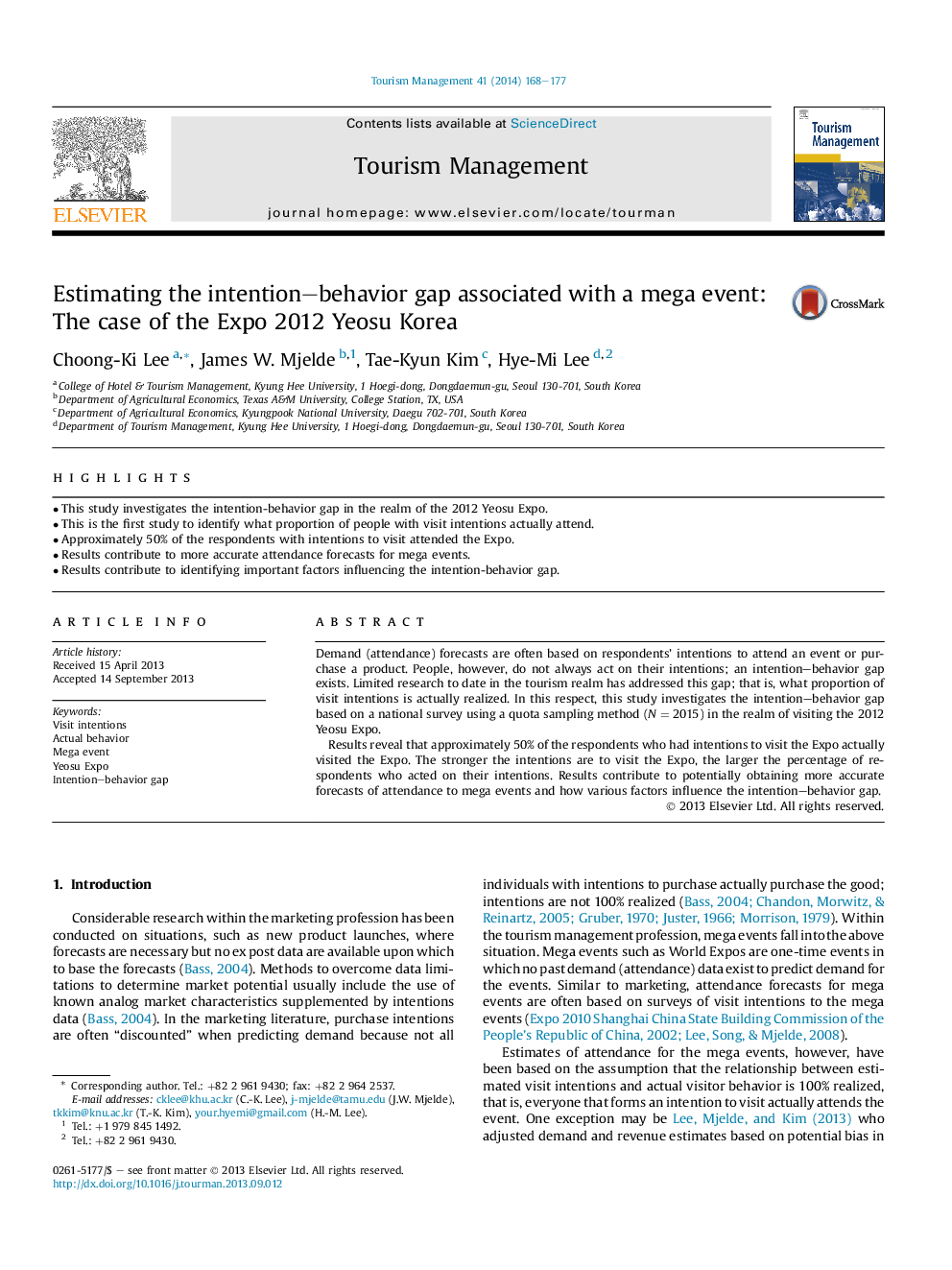| Article ID | Journal | Published Year | Pages | File Type |
|---|---|---|---|---|
| 1012126 | Tourism Management | 2014 | 10 Pages |
•This study investigates the intention-behavior gap in the realm of the 2012 Yeosu Expo.•This is the first study to identify what proportion of people with visit intentions actually attend.•Approximately 50% of the respondents with intentions to visit attended the Expo.•Results contribute to more accurate attendance forecasts for mega events.•Results contribute to identifying important factors influencing the intention-behavior gap.
Demand (attendance) forecasts are often based on respondents' intentions to attend an event or purchase a product. People, however, do not always act on their intentions; an intention–behavior gap exists. Limited research to date in the tourism realm has addressed this gap; that is, what proportion of visit intentions is actually realized. In this respect, this study investigates the intention–behavior gap based on a national survey using a quota sampling method (N = 2015) in the realm of visiting the 2012 Yeosu Expo.Results reveal that approximately 50% of the respondents who had intentions to visit the Expo actually visited the Expo. The stronger the intentions are to visit the Expo, the larger the percentage of respondents who acted on their intentions. Results contribute to potentially obtaining more accurate forecasts of attendance to mega events and how various factors influence the intention–behavior gap.
